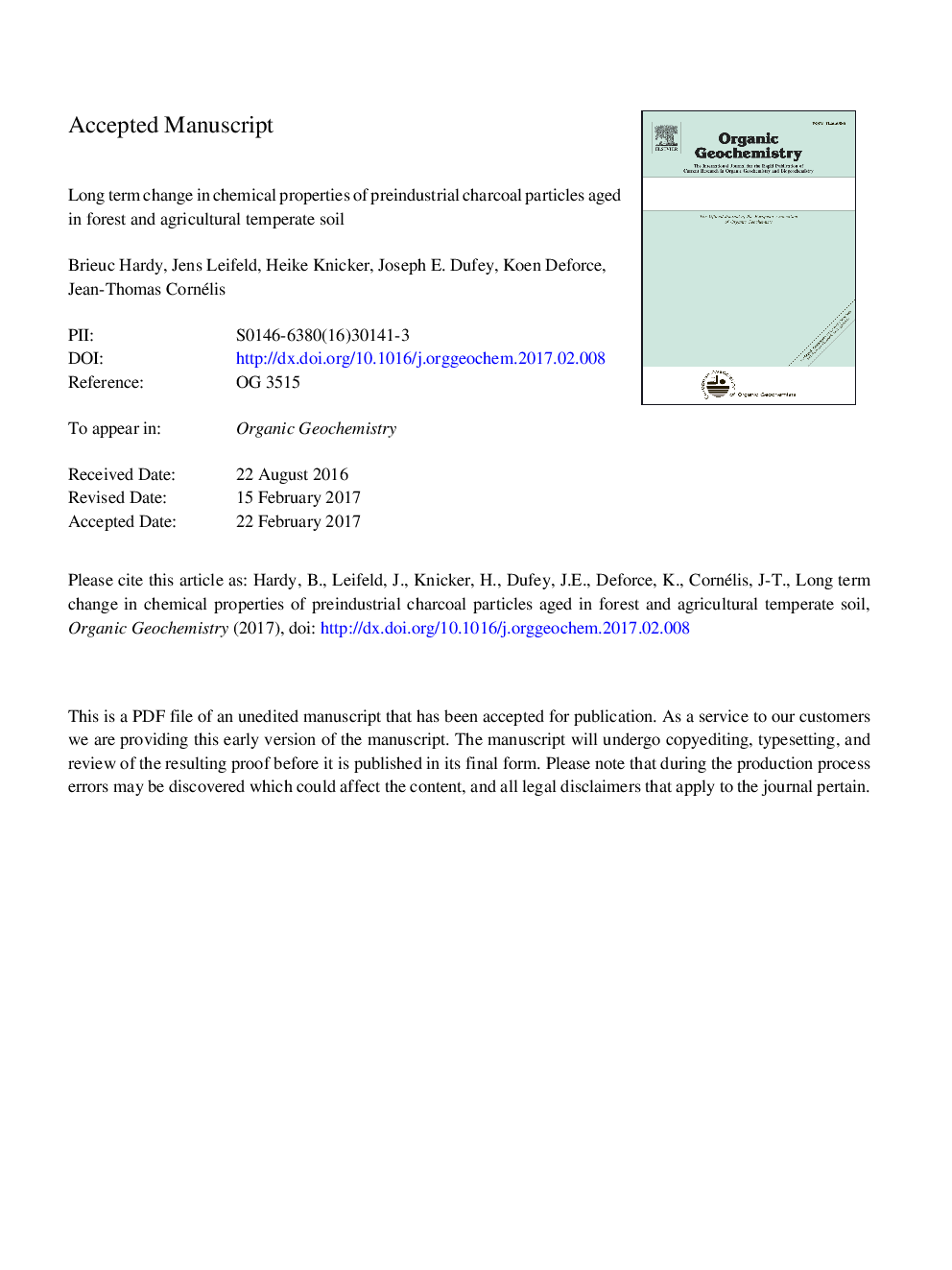| Article ID | Journal | Published Year | Pages | File Type |
|---|---|---|---|---|
| 5161460 | Organic Geochemistry | 2017 | 51 Pages |
Abstract
Cultivation increased the association of charcoal with soil minerals, which is favored by deprotonation of carboxylic acids under liming, thereby enhancing the reactivity of charcoal toward mineral surfaces. The large specific surface area of charcoal, related to its porosity, promotes the precipitation of 2:1 phyllosilicates and CaCO3. Both ageing and cultivation decreased the resistance of charcoal to dichromate oxidation, related to an increase in the H/C of charcoal. Differential scanning calorimetry revealed the presence of three fractions of distinct thermal stability. Saturation of carboxylate groups with Ca2+ under liming decreased the thermal stability of the O-rich, less thermally stable fraction of charcoal. This fraction decreased over time of cultivation, leading to a relative accumulation of the thermally most stable fraction of charcoal. This might result from the preferential loss of the O-rich fraction or the slowdown of charcoal from oxidation via association with minerals. Our results highlight the idea that land use significantly affects the properties of BC through the modification of soil conditions, which might influence the kinetics of BC loss from soil.
Keywords
Related Topics
Physical Sciences and Engineering
Chemistry
Organic Chemistry
Authors
Brieuc Hardy, Jens Leifeld, Heike Knicker, Joseph E. Dufey, Koen Deforce, Jean-Thomas Cornélis,
